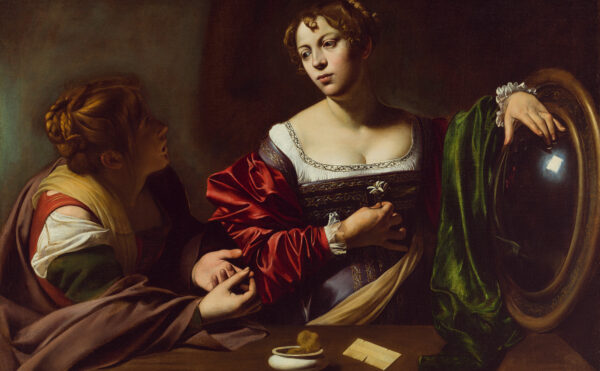At first glance it resembles an empty picture frame, approximately one-foot square, mounted on a squat plastic pedestal. The three-word, block-lettered phrase emblazoned on the base is the sole indicator of its function, but only after plugging in the power cord does the relevance of that slogan become clear. The mechanism whirs to life, and ghostly white images flicker across the glass, revealing an advertisement for Calvert Extra—“the soft whiskey” that “mixes well in any drink.” After a few seconds the glass returns to its transparent state, and then the cycle begins again.
This monochrome liquor advertisement is a distant ancestor of the screens found in most of today’s televisions, cell phones, and laptops. These devices use compounds called liquid crystals to modulate light, a technology essential to the creation of thin electronic displays. This artifact from the early 1970s represents one of the first attempts to transform the liquid crystal display (LCD) into a commercially useful technology. In a sense it is less a picture frame than a window into the history of electronic innovation.
Scientists had first observed liquid crystals—materials that flowed like a liquid but refracted light like a crystalline solid, such as quartz—in the late 19th century. They remained a laboratory curiosity until 1962, when Richard Williams, a physical chemist at the Radio Corporation of America (RCA), found that electric fields changed how much light passed through certain liquid crystals. A few years later one of Williams’s colleagues, an electrical engineer named George Heilmeier, showed that subjecting samples to even higher voltages induced a form of turbulence that scattered light, causing a previously clear compound to appear milky white. Heilmeier called this effect “dynamic scattering” and organized a research team to incorporate it into displays.
RCA, at the time still the nation’s leading consumer-electronics firm, had pioneered the development of both black-and-white and color television. Early on, Heilmeier hoped that liquid crystals might eventually replace the bulky picture tubes used in RCA’s sets, enabling the creation of a TV that could hang on the wall like a painting. He soon realized that a liquid crystal–based TV would require thousands of pixels, each one activated by its own transistor. Although today’s flat-panel displays operate along these lines, constructing even a prototype LCD television was beyond the capacity of integrated-circuit manufacturing in the late 1960s.
Undeterred, the RCA researchers asked engineers in the company’s semiconductor division for help developing other applications. One promising idea was an electronic advertising display. The group pitched their idea to a marketing firm named Ashley-Butler, which gave them a $100,000 contract to make it a reality.
Heilmeier’s first dynamic-scattering displays had been relatively simple: a sandwich consisting of a thin layer of liquid-crystal material between two pieces of glass lined with a transparent conductive coating. This coating was laid down in patterns, which controlled where the dynamic scattering, and thus the image, appeared. Ashley-Butler wanted to extend this principle to make a simple animated sequence, enticing people to buy a product.
Accomplishing this task required new techniques to fill and seal displays, apply patterns on the glass, and activate images in the proper order. Richard Klein, one of the semiconductor engineers Heilmeier recruited to the LCD group, was particularly proud of the switching mechanism that controlled the animation, which was based on a project from his undergraduate days at Cornell University.
Every year students at Cornell would decorate their dorms to celebrate homecoming, competing to make the most creative design. Klein and his friends won the prize one year for a light show. They covered the windows in their dorm room with paper cut into shapes, such as letters or pictures, that became visible to someone standing outside when the lights were switched on. They then rigged up a system of wires and relays to trigger the room’s lights in a particular order, using, of all things, a toilet-paper tube. The students attached the cardboard tube to a motor, covered it with foil, and stuck metal contacts to the outside, allowing the roll to turn and trigger the lights much like a mechanical music box. Several years later the same basic technique would allow Klein to operate a different kind of electronic display.
The RCA team delivered their LCD proto-types to Ashley-Butler and started scaling up their liquid-crystal production facilities. But a lack of internal support and staff cuts following RCA’s 1971 withdrawal from the commercial computing market thwarted their efforts. Heilmeier left the company to pursue a White House fellowship. Klein was fired but soon found a new job with Ashley-Butler, which was so impressed with liquid-crystal technology that it set up a subsidiary—Liquid Crystal, Inc.—to make advertising displays like the one shown here, which Klein donated to CHF in 2009.
Richard Klein’s story is taken from his interview with CHF’s Center for Oral History.




